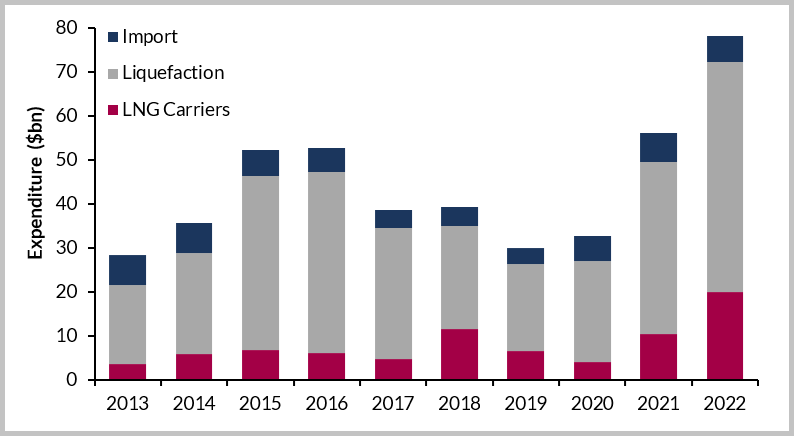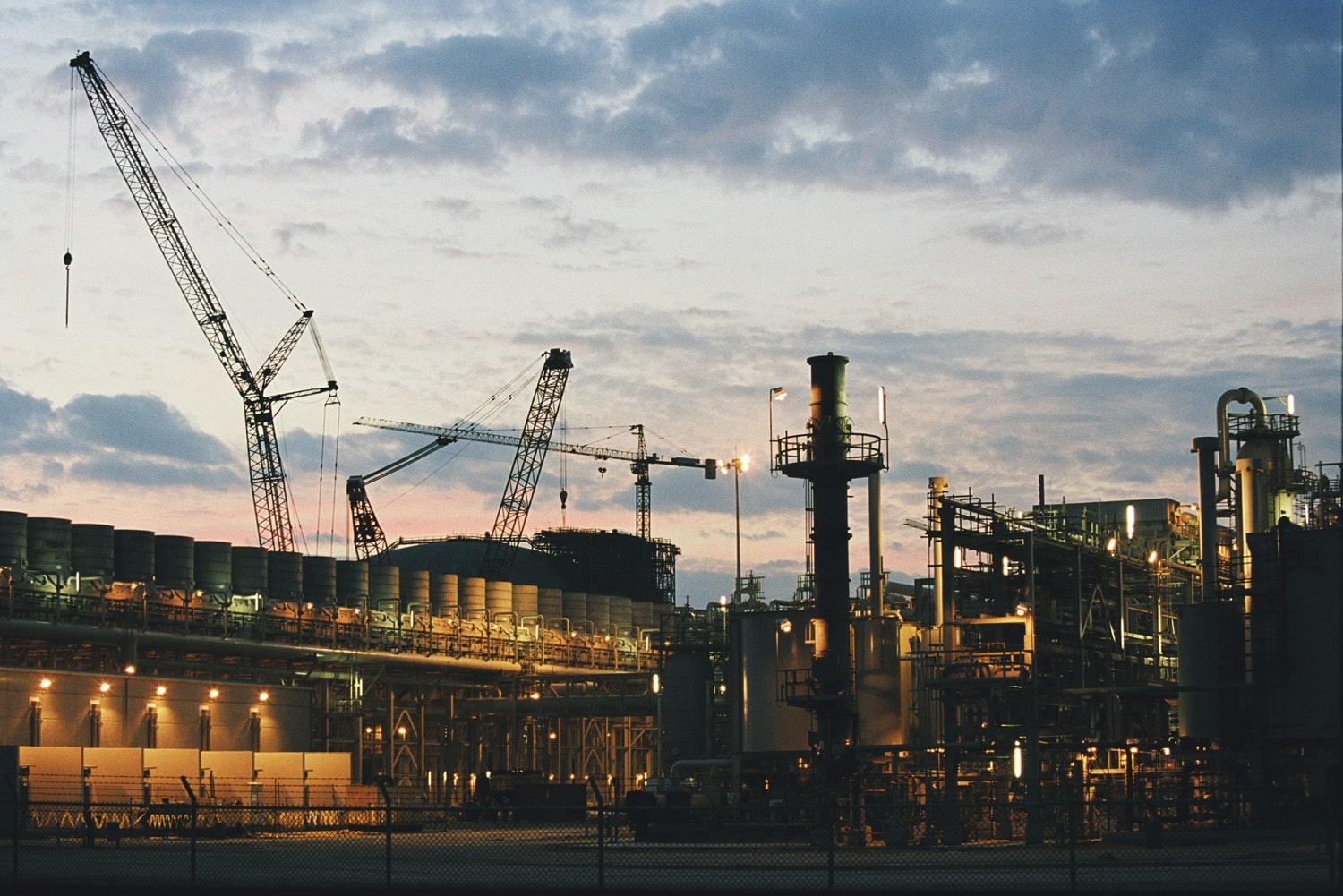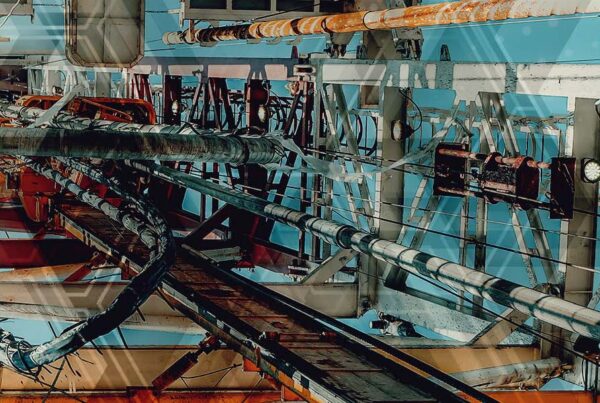Global LNG Capex to total $236bn, as investors expect stronger LNG demand
Westwood expects global LNG capital expenditure (Capex) to total $236 billion (bn) over the 2018-2022 period, based on its latest analysis of sanctioned and upcoming projects. This represents a 14% growth compared to the preceding five-year period. In the near-term, expenditure is expected to be subdued due to the lack of project sanctioning seen during the oil price downturn. The LNG shipbuilding business is also expected to recover with over 150 further orders expected to be placed for delivery over the period to 2022.

Global LNG Capex by Facility Type 2013-2022
Contact us to access the latest LNG project details and forecast databook via SECTORS.
Key Conclusions
- Over the forecast period, the construction of liquefaction terminals will account for 67% of the LNG market, with expenditure totalling $157.5bn. This investment will subsequently lead to an additional 119 mmpta of global export capacity over the 2018-2022 period.
- Despite several countries opting for floating regasification units, land-based import terminals remain attractive, with expenditure expected to grow at 8% CAGR over the 2018-2022 period, and forecast spend to total $25.9bn.
- Over the 2018-2022 period, 265 LNG carriers are expected to be delivered, as record numbers of carriers will be required to meet the increased LNG output expected by the end of the forecast period. Of the number of LNG carriers expected to be delivered, 154 units are yet to be ordered.
- Korean shipbuilders will continue to dominate the carrier market, with Daewoo Shipbuilding and Marine Engineering, Samsung Heavy Industries and Hyundai Heavy Industries accounting for 60% of the current orderbook.
- Air Products’ single mixed refrigerant and ConocoPhillips’ Optimized Cascade process accounted for 54% and 46% respectively of the liquefaction technology market over the 2013-2017 period. Over the forecast period, Air Products currently has the largest market proportion (74%), with Conoco Philips (20%), Shell (4%) and Linde (2%) accounting for the remaining proportion of known contracts awarded.
- Operators sanctioning new projects are seeing lower supply chain costs, and despite current over-supply are expecting a growth in LNG demand that will see supply-demand balance by the mid-2020s.
- While long-term contracts are the foundation of the LNG contracting model that underpins returns on investment, changes in the business environment are driving an increase in spot trading and short-term contracts, leading to a rise in the number of spot cargoes.
The World LNG Market Forecast 2018-2022 is presented using SECTORS, detailed analysis, and commentary on eight distinct regions with a ten-year market view – historic data covering the period 2013-2017 and forecast data for 2018-2022.
Whilst Westwood’s SECTORS LNG Module provides project-by-project information and Capex details by service type, the report further provides detailed insight on:
- Macro-Economic Drivers and Market Trends
- LNG Pricing and Short-term Trade
- Supply Chain & Contractors
- LNG Demand – Supply Outlook
- LNG Transportation




